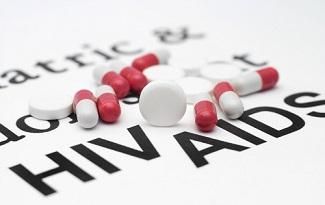Perceptions of HIV Severity Raise Prevention Challenges Among MSM
Changes in perceptions about the severity of HIV with advances in treatment and efforts to normalize living with the disease may create challenges for HIV prevention, a new study from the Netherlands suggests.

Perceptions about the severity of HIV infection are associated with risk taking, a new study found, highlighting challenges with balancing efforts to normalize living with the disease and preserve motivation to avoid infections.
The study, published in the Journal of the International AIDS Society, included 1072 men who have sex with men (MSM) in the Netherlands. A majority of those (77%) perceive HIV infection as a severe illness, with negative social consequences being a leading factor in that perception. Perceiving HIV infection as non-severe to moderate was associated with more prevalent risk taking.
“In the current biomedical era of highly tolerable and effective treatment, one could assume that the severity of HIV can be justifiably perceived as less threatening for one’s physical wellbeing, which in turn might contribute to changes in motivation to engage in HIV-protective behaviors,” the study authors, led by Hanne M.L. Zimmermann of the Public Health Service of Amsterdam, wrote. “The perceptions concerning the severity of an illness, however, also relate to their anticipated social consequences.”
The study participants responded to a questionnaire distributed on gay dating sites and social media between April and July 2019. The participants were HIV negative (89%) or never tested for HIV (11%).
Average age was 42, 61% had college degrees, 85% did not have chronic illness, 51% had HIV-positive acquaintances, 46% reported being in a steady relationship, and 21% reported current or past PrEP use. Sexual risk behavior, including recent condomless anal sex (CAS) with a casual partner with a detectable HIV viral load or unknown HIV status was reported among 17% of respondents. That rose to 28% when CAS with an HIV-negative partner without the use of PrEP was included.
The questionnaire was developed based on in-depth interviews with 18 MSM recently diagnosed with HIV to identify burdensome aspects of living with HIV. It included questions about socio-demographic characteristics, sexual behavior, and perceptions of the severity and anticipated consequences of HIV infection, including considerations related to health, psychosocial factors, disclosure, and relationships. A structural equation model was constructed to explore perceptions about the severity of HIV and associations with sexual risk behavior.
Most respondents (77%) perceived HIV infection as severe, including 66% of PrEP users and 80% of non-PrEP users. Higher perceptions of HIV severity were most strongly associated with anticipated negative social and psychological consequences (β = 0.34, 95% CI = 0.24 to 0.44; p < 0.001), followed by anticipated negative consequences on sex/relationships (β = 0.28, 95% CI = 0.19 to 0.38; p < 0.001) and anticipated disclosure-related consequences (β = 0.16, 95% CI = 0.07 to 0.26; p = 0.001). Anticipated health consequences weren’t associated with perceptions of high severity of HIV infection (β = 0.06, 95% CI = -0.03 to 0.14; p = 0.18).
Among the survey respondents, 28% reported recent sexual risk behavior. Lower perception of risk reported among 23% of respondents was associated with more prevalent risk taking (β = 0.07, 95% CI = 0.12/0.01).
“The minority of MSM who do not perceive HIV as a serious disease are more likely to engage in sexual risk behavior,” the study authors wrote. “With ongoing biomedical advances and efforts to reduce HIV-related stigma, this group might expand over time. Any intervention to increase the motivation to use HIV prevention strategies requires a balance between, on the one side, stigma reduction and normalization of HIV, whereas on the other, preserving the motivation to avoid HIV infection and adopt protective strategies. It could be one of the bigger challenges facing HIV prevention today.”
Reducing HIV stigma has been a focus of efforts to increase HIV testing and treatment.
A recent study in rural Uganda suggested that efforts to reduce stigma should be tailored to different demographics. That study found that greater perceived individual- and community-level stigma was related to lower testing rates for women. For men, greater individual-level stigma was related to lower testing rates, but greater community-level stigma was related to more frequent HIV testing.
Another study in London found that a combination of HIV prevention methods—including pre-exposure prophylaxis, early HIV diagnosis through frequent testing and timely antiretroviral therapy for treatment as prevention—was associated with a sharp drop in HIV transmission among gay, bisexual and other men who have sex with men.
